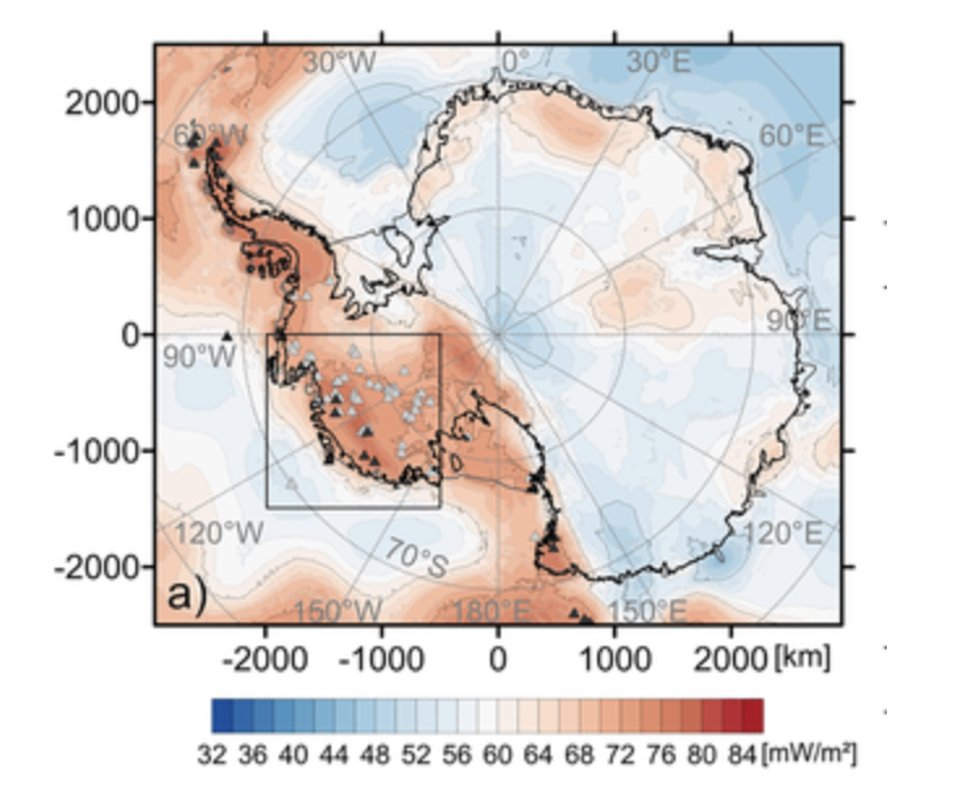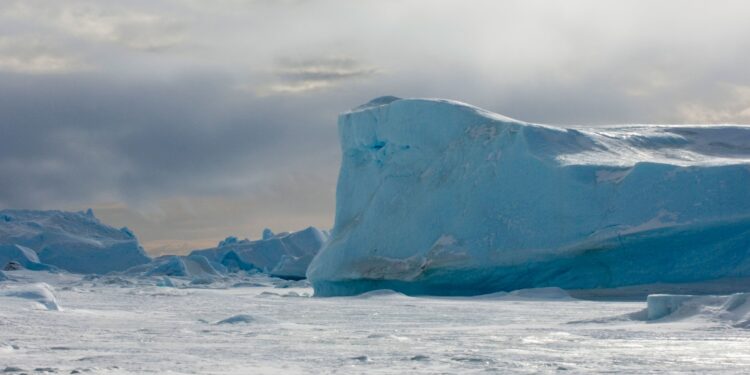The climate catastrophe caravan is on the move again with the alarmists whipping up fears over a supposed low rate of winter sea ice in Antarctica. In the Financial Times, science editor Clive Cookson reports that Antarctica “faces a catastrophic cascade of extreme environmental events… that will affect climate around the world”. Needless to say, there is no mention that Antarctica sea ice was at a record high in 2014, but curiously missing from all the hysteria is the fact that reanalysed early satellite data shows similar levels of winter ice in 1966. Even more curious is that minimal journalist sleuthing is required to uncover this information, since it is supplied by the frequently-consulted National Snow and Ice Data Centre (NSIDC).
Colorado-based NSIDC cited evidence that early Nimbus satellite data revealed winter sea ice extent of around 15 million square kilometres in 1966 “may have rivalled the very low level seen today”. There are some uncertainties in reanalysing such early satellite data, but the NSIDC says the findings are consistent with observations that Antarctica sea ice extent is “highly variable”. Last year, a group of American geographers and statisticians examined historical observations of Antarctica sea ice extent and found “statistically significant” positive trends since 1979. Furthermore, these trends across all four seasons compared with “statistically significant decreases” throughout much of the early and middle 20th Century.
Some of the FT guff came from a report commissioned by the Net Zero-promoting U.K. Government. Lead author Professor Martin Siegert from the University of Exeter says he is “staggered by the amount of change we’ve seen already in the past few years”. In fact we only have complete records of Antarctica sea ice since 1979, but it is more than likely that, like ice in the Arctic, it waxes and wanes on a natural cyclical basis. But like the coral on the Great Barrier Reef, the politically-inspired alarmists cry wolf when it falls, but move on to the next cherry pick when it recovers. Even though carbon dioxide is well mixed over the entire southern hemisphere, the small contribution made by humans is somehow held responsible, while cyclical changes offer the opportunity for Greta Thunberg-style contributions to climate science knowledge.
Antarctica was also in the news last month due to its leading role in promoting the “hottest day in 125,000 years” scare. The global claim of 62.6°F was the guesstimate product of a computer model from Climate Reanalyzer. It was heavily skewed by a ‘heatwave’ in Antarctica on July 3rd – 4th that saw temperatures soar in parts of the continent from -70°F to around -30°F. Without satellites, this localised rise would never have been detected in the past, calling into question the “hottest day” claims. Steve Milloy examines such claims every month. He argued that without the Antarctica spike, the global temperature would have been around 57.5°F, similar to the long-term figure.
As the Daily Sceptic has often noted in the past, Antarctica is a difficult place to create climate alarm. Over the last seven decades there has been little or no warming over large areas of the continent. According to a recent paper (Singh and Polvani), Antarctica sea ice has “modestly expanded” and warming has been “nearly non-existent” in this period. According to NASA figures, the ice loss is 0.0005% a year. Another recent paper found that ice shelves surrounding the continent grew in overall size by 0.4% in the years 2009-2019.

The above map from Singh and Polvani shows that all the warming in Antarctica is to be found in the west. It is to this area that eco warriors return with tales of collapsing ice shelves and glaciers. But it has always been known that the west side is an area of considerable volcanic activity. The full extent of this has recently been shown by scientists working at the GFZ German Research Centre for Geosciences. They provide scientific evidence that shows a “direct link” between recent western ice loss and geothermal heat flow. Furthermore, they state that it is common to attribute changes in ice dynamics and loss to atmospheric and oceanic influences. “However, recent studies suggest a direct link between the origin of ice streams and zones of increased heat flow,” it is noted.

This map compiled by the German scientists plots the known volcanoes (black triangles) under the ice in Antarctica, and highlights the geothermal heat flows arising from them. As can clearly be seen, the warming shown in the first graph correlates with the heat flows under the ice. The scientists say their work indicates a “direct connection” of deep lithospheric and surface processes. This is said to be in agreement with elevated geothermal heat found below the Thwaites and Pope glaciers.
That would be the Thwaites Glacier, otherwise known in the popular prints as the ‘Doomsday’ Glacier.
Chris Morrison is the Daily Sceptic’s Environment Editor.














To join in with the discussion please make a donation to The Daily Sceptic.
Profanity and abuse will be removed and may lead to a permanent ban.
There is no Climate Crisis
Perhaps the best article I’ve read about climate and the stupidity of the “climate change” narrative:
https://brownstone.org/articles/rise-and-rhetoric-of-climate-chicken-littles/
Thanks for that, I’m glad I read it
It was also on here on the 5th August.
The fact that this comment gets a thumbs-down I think tells us something about the phenomenon. Is it the work of a bot? Or just someone who simply has no life?
A cult in its death throes. No science, no data, no logic. And next year when the ice sheets expand (or the year after), what then? Boiling causes the expansion? Wind, volcanoes other factors at work maybe? Nah. Plant food.
The WEF-NWO is based around climate bullshit and it will fail. The only thing these little fascists can do is what they did during the rona scamdemic – no belief in our fraud = no job. I think enough people are awake that this too shall fail.
Climate Science goes something like this. ———-(1) Make all manner of claims about what the climate is going to do in 50 or 100 years knowing that none of it can be falsified. (2) Make claims of certainty where there are none and never ever admit the fact that there is huge uncertainty in the speculative climate models that you insist on calling “science”. (3) When questioned on the reliability of the models full of assumptions, simply point out how the models are faster than ever and cost millions. (4) Endlessly talk of a “climate crisis” based on zero evidence. (5) Forever appeal to Authority as if Science were ever decided by a show of hands from government funded data adjusters. (6) Denigrate all the ” deniers” because since all scientists agree then so should you or there must be something wrong with you. (7) Continue to use propaganda since people have a tendency to believe things that we know least about as long as it is repeated often enough
Don’t forget to include (2b) – when creating models, deliberately and persistently exclude the effects of the sun, clouds, geological activity, urban heat islands and, some would also add, the global-solar electric circuit and polar drift.
Nice article here.
https://www.hoover.org/research/flawed-climate-models
“Our current lack of understanding of the Earth’s climate system does not allow us to determine reliably the magnitude of climate change that will be caused by anthropogenic CO2emissions, let alone whether this change will be for better or for worse.”
But Wikipedia says the Hoover Institution is a Conservative organisation, which frightens me! (Here in Norfolk UK the sun is cracking the pavement again; wet, windy, 12C rising to 24C later (I’ll believe that when I feel it…)
Good one, varmint. In number 6, also say: ‘…and continue to claim that 97% of climate scientists believe in anthropogenic global warming even when faced with the evidence that the real figure is 0.3%’
Everyone is entitled to opinion ofcourse but it is quite funny to see that single red down arrow on our comments, and the silly person doing that doesn’t have the balls to say why.
Simple answer there is no climate crisis
I like how ‘global warming’ only seems to effect very localised bits of the globe! Is it global or not?
Could do with a bit of ‘local’ warming to be honest. All this rain and little sun is bad for the ripening and harvest time.
Wet, windy, below average summer in the UK – had my wood stove on many times….I am curious when the Met and BBC et al will declare this the hottest summer evah in the UK?
All the Antarctic ice shelves that are breaking up all survived greater warming during the Mediaeval Warm Period, the Roman Warm Period, the Minoan Warm Period and the Holocene Climate Optimum. What is different now? Could it be that the ice shelves have failed structurally because of the huge weight of ice that has built up behind or the millennia along with the pushing and pulling of the moon? Or is it because of, or and, the numerous aircraft landing and taking off and the seismic studies that use explosives?
Lead author Professor Martin Siegert from the University of Exeter says he is “staggered by the amount of change we’ve seen already in the past few years”
The doomsters seem to exist in a perpetual state of staggerment around ordinary climatological cycles that were described in detail decades before they enrolled in alarm academy. Now reaching saturation point, they’re soon going to need some new terms to describe their performative flapping.
I recently read Michael Palin’s book on Erebus. Sometimes the Antarctic explorers sailed round and round, sometimes they made it to land.
They’re probably developing a climate vaccine with seasonal boosters. Ignore.